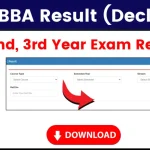$1500 Child Checks Coming 2024: As families gear up for 2024, the $1,500 Child Checks bring welcome relief for many. This federal initiative is designed to provide financial support to eligible families, helping them manage the growing costs of raising children. From childcare to groceries, these checks aim to make a tangible difference in people’s lives.

In this guide, you’ll find everything you need to know about the program, including eligibility criteria, benefits, timelines, and tips for applying. Whether you’re a working parent or a tax advisor, this article will answer your questions and provide actionable steps.
$1500 Child Checks Coming 2024
| Feature | Details |
|---|---|
| Eligibility Criteria | Income limits: Single <$75,000; Joint <$150,000; Head of Household <$112,500 |
| Child Requirements | Must be under 17 years old by the end of 2024 |
| Residency Requirements | Families must reside in the U.S. |
| Maximum Benefit Amount | $1,500 per eligible child |
| Expected Payment Timeline | Second half of 2024 |
| Claim Process | File IRS Form 1040 and Schedule 8812 |
| Official IRS Resources | Visit the IRS website |
The $1,500 Child Checks in 2024 offer invaluable support for families across the United States. By reducing tax burdens and providing much-needed funds, this program reflects a commitment to improving family well-being.
Whether you’re a seasoned taxpayer or filing for the first time, understanding the process is essential to ensuring you receive the full benefit. Visit the IRS website for the latest updates and resources.
What Are the $1,500 Child Checks?
The $1,500 Child Checks are an extension of federal programs that provide financial relief to families with dependent children. These payments reduce tax liabilities and, in many cases, provide refunds directly to qualifying households.
This program complements previous initiatives like the Child Tax Credit (CTC), which saw expanded benefits during the pandemic. It reflects the government’s ongoing commitment to combating child poverty and addressing the rising cost of living.
Real-Life Impact
Let’s consider two examples to see how these payments can benefit families:
- Single Parent Household: Maria, a single mother earning $60,000, has two children under 17. She qualifies for the full $3,000 ($1,500 per child). This additional support helps her cover daycare and school supplies.
- Middle-Income Family: The Johnsons, who file jointly, earn $140,000 and have one child. They qualify for the full $1,500 check, which offsets their rising grocery bills.
Eligibility Requirements
Income Limits
Your eligibility depends on your adjusted gross income (AGI):
- Single filers: Less than $75,000
- Married filing jointly: Less than $150,000
- Head of Household: Less than $112,500
If your income exceeds these limits, your benefit amount will gradually decrease and eventually phase out.
Child’s Age
Children must:
- Be under 17 years old by the end of 2024.
- Have a valid Social Security Number (SSN).
Residency
The family must:
- Reside in the U.S. for at least half the year.
- Use a U.S. address when filing taxes.
Filing Status
You must file a tax return to claim the benefit, even if you typically don’t owe taxes.
A Step Forward in Tax Relief
The Child Tax Credit has evolved over decades. Initially introduced in 1997, it has undergone several expansions. In 2021, the American Rescue Plan temporarily increased credit amounts and allowed monthly payments, significantly reducing child poverty. The $1,500 Child Checks for 2024 build on these achievements, targeting families most in need.
How to Claim Your Check
Step 1: File Your Tax Return
File your 2024 tax return (Form 1040) during the tax season starting in January. Include all dependents’ information accurately.
Step 2: Use Schedule 8812
This form determines eligibility for the child credit. Fill it out completely to avoid delays.
Step 3: Provide Necessary Documentation
Ensure you have:
- Birth certificates for children
- Proof of residency (e.g., utility bills)
- Income documentation (e.g., W-2 forms)
Step 4: Monitor IRS Updates
The IRS may request additional information. Check your online IRS account for updates.
Canada Carbon Tax Rebate in December 2024? – Check Eligibility, Payment Amount & Date
Potential Challenges and Tips
- Common Mistakes:
- Failing to list all dependents.
- Using incorrect income information.
- Avoid Delays:
- File early to expedite processing.
- Use electronic filing for faster results.
- Professional Guidance:
- A tax advisor can help ensure all forms are accurate.
Additional Resources
Explore these official sources for more guidance:
- IRS Official Website
- Child Tax Credit Information
FAQs
Q1: Can I receive the checks if I owe back taxes?
Yes. The checks are not reduced for unpaid taxes or federal debts.
Q2: What if I share custody?
Only one parent can claim the credit per tax year. Typically, it’s the parent with whom the child resides for the majority of the year.
Q3: Do I need a bank account to receive the payment?
No. The IRS offers options for direct deposit, paper checks, or prepaid debit cards.
Q4: Are these payments recurring?
No. The $1,500 checks are part of a one-time program for the 2024 tax year.








![B.Ed Result 2024 [Announced]; Check 1st & 2nd Year (Part 1, 2) Semester Exam Result](https://www.idolgu.in/wp-content/uploads/2024/11/B.Ed-Result-2024-Announced-150x150.webp)
